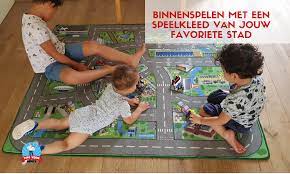In the early stages of life, every moment is a learning experience liefboefje for babies. From their first smile to their first steps, each milestone is built on the foundation of sensory exploration and motor skill development. One of the most delightful tools in a baby’s developmental toolkit is the humble playmat. These vibrant, cushioned surfaces offer much more than just a comfortable space for tummy time—they are integral to a baby’s growth and learning.
A World of Colors and Textures
Playmats come in an array of designs, colors, and textures, each crafted to captivate and engage an infant’s senses. The colorful patterns and playful designs stimulate visual development, drawing a baby’s attention and encouraging them to explore. Some mats feature high-contrast patterns that are particularly effective for newborns, whose vision is still developing. Textured elements, such as crinkly fabrics or plush patches, add a tactile dimension that helps babies learn about different sensations.
Encouraging Motor Skills
The cushioned surface of a playmat provides a safe space for babies to practice and refine their motor skills. During tummy time, an essential activity for strengthening neck and shoulder muscles, playmats offer a comfortable and supportive environment. As babies begin to roll, scoot, and crawl, the mat provides a soft landing pad and reduces the risk of bumps and bruises. Some playmats come with built-in toys and features like arches with hanging objects, which encourage reaching, grabbing, and grasping—key actions for developing fine motor skills.
Interactive Play and Cognitive Growth
Many playmats are designed with interactive features that stimulate cognitive development. Mats with mirrors, activity loops, or attached plush toys can engage babies in cause-and-effect play. For instance, a baby might reach for a dangling toy and cause it to make a sound or light up, helping them understand the relationship between their actions and the resulting responses. This kind of interaction supports problem-solving skills and encourages curiosity.
Convenience and Safety
Beyond their developmental benefits, playmats offer practical advantages for parents. They are typically easy to clean and can be rolled up or folded for storage, making them a convenient option for on-the-go play. Most playmats are made from non-toxic materials and feature a slip-resistant backing, ensuring a safe environment for babies to explore. The soft padding also provides a cushioning effect that protects against hard floors and reduces the risk of injury during play.
Choosing the Right Playmat
When selecting a playmat, parents should consider factors such as size, material, and design. A larger mat provides more space for play and exploration, while mats made from hypoallergenic and washable materials are practical for everyday use. Additionally, a playmat with engaging features suited to the baby’s developmental stage can enhance the learning experience.
The Lasting Impact
Playmats are not just a temporary accessory but a tool that can significantly impact a baby’s developmental journey. By providing a stimulating and safe space for play, they support physical, cognitive, and sensory development. As babies grow and their needs evolve, playmats can adapt too—serving as a cozy spot for storytime or a backdrop for imaginative play.
In essence, playmats are a small investment with a big impact, transforming everyday moments into opportunities for growth and discovery. They turn the ordinary experience of playing on the floor into an extraordinary adventure in learning, making them a cherished part of the early years for many families.

